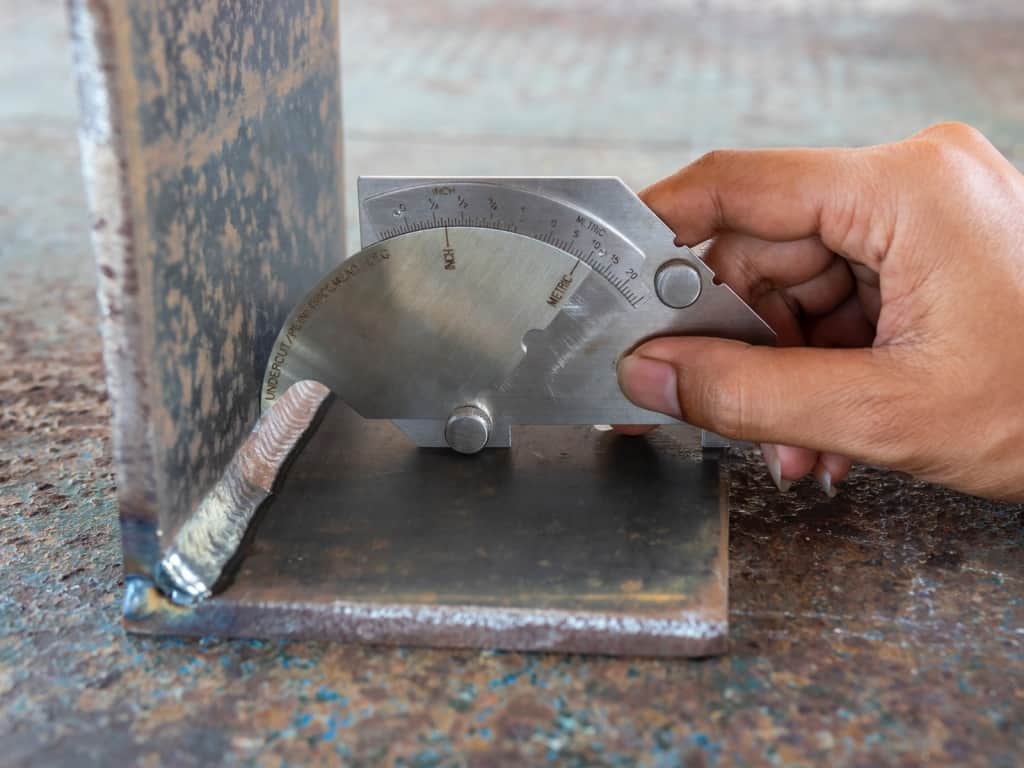Your Complete Manual to Preventing Weld Undercut Like a Pro
Your Complete Manual to Preventing Weld Undercut Like a Pro
Blog Article
Crucial Tips for Welders: Stopping Undercut Welding and Ensuring Stronger Weld Joints
In the world of welding, attaining solid and resilient weld joints is the keystone of creating premium work. One common obstacle that welders usually come across is undercut welding, which can jeopardize the integrity of the weld joint.

Understanding Undercut Welding
Undercut welding is an usual welding problem that takes place when the weld metal falls short to correctly load the groove and results in a groove-like clinical depression along the weld bead. This flaw weakens the weld joint, making it vulnerable to fracturing and failure under stress and anxiety. Undercutting can be triggered by numerous elements, consisting of too much welding current, high welding rate, inappropriate electrode angle, incorrect electrode dimension, and inadequate welding technique.
One of the primary factors for undercut welding is an imbalance between the welding existing and the welding speed. If the welding current is too expensive or the welding rate is also fast, the weld metal may not appropriately fill the groove, resulting in damaging. In addition, using an electrode that is too big can lead to a comparable end result, as the excess steel can not properly stream into the groove.
To protect against undercut welding, welders need to ensure they are using the appropriate welding specifications, preserve a suitable electrode angle, select the appropriate electrode size, and technique proper welding methods. By dealing with these factors, welders can decrease the danger of undercutting and develop stronger, much more trusted weld joints.
Appropriate Welding Method
Reliable welding strategy plays an essential function in guaranteeing the high quality and honesty of weld joints. One basic element of correct welding method is keeping the proper angle and distance in between the welding gun and the work surface.
Furthermore, a regular and stable hand activity is essential for creating strong and sturdy weld joints. Welders ought to go for smooth, consistent motions to ensure even circulation of the weld product. Proper control of the welding gun and filler material is also essential to achieving ideal infiltration and blend.
Moreover, controlling the warm input and choosing the appropriate welding criteria based upon the material being bonded are vital consider accomplishing top notch welds - Preventing weld undercut. Welders need to follow the advised settings supplied by welding procedure specs and adjust them as needed based upon the particular needs of the task. By mastering proper welding techniques, welders can substantially enhance the toughness and dependability of their weld joints
Selecting the Right Electrode
When considering the value of picking the ideal electrode in welding applications,Preserving the correct angle and distance in between the welding gun and the workpiece is basic. The selection of electrode plays an important duty in figuring out the top quality and stamina of the weld joint. Electrodes are available in different kinds, each created for certain objectives and products.
To start with, choosing the proper electrode size is necessary. Thinner electrodes are ideal for welding slim products, while thicker electrodes are visit our website better for thicker materials and higher heat applications. Matching the electrode size to the density of the work surface assists accomplish a balanced weld.
Secondly, understanding the product make-up of the electrode is essential. Various electrodes are made for welding details products like steel, stainless steel, aluminum, or cast iron. Utilizing the proper electrode product makes sure great combination and reduces the risk of issues in the weld.
Last but not least, taking into consideration the welding setting and technique is essential when choosing the electrode kind. For circumstances, specific electrodes are better matched for overhanging or upright welding positions, while others function well for level or horizontal placements. Picking the appropriate electrode based on the welding technique improves the overall weld quality and honesty.
Preparing the Base Metal
To ensure a successful welding procedure, what initial steps should be taken when preparing the base steel for welding? In addition, any existing weld product or deposit from previous welding should be eliminated to make sure a tidy surface for the new weld.

Carrying Out Post-Weld Inspections

After performing these evaluations, welders must compare the outcomes versus market requirements and job requirements to ensure that the weld joint fulfills all essential standards. Any type of variances or inadequacies uncovered during the post-weld evaluation should be promptly resolved with suitable corrective actions to ensure the weld's integrity. pop over to this web-site By faithfully doing post-weld assessments and promptly resolving any type of issues, welders can promote the high quality and reliability of their job, ultimately adding to the security and longevity of the bonded structures.
Final Thought

Finally, stopping undercut welding and guaranteeing more powerful weld joints need a mix of appropriate welding strategy, selecting the appropriate electrode, preparing the base metal appropriately, and conducting post-weld examinations. By recognizing the reasons of undercut welding and implementing the needed read review precautions, welders can create top quality weld joints that fulfill industry requirements and make certain the structural stability of the bonded components.
Undercut welding is a typical welding issue that happens when the weld steel falls short to correctly load the groove and results in a groove-like depression along the weld bead (Preventing weld undercut). Undercutting can be created by various elements, consisting of too much welding current, high welding speed, inappropriate electrode angle, incorrect electrode size, and bad welding strategy
One of the main reasons for undercut welding is a discrepancy in between the welding existing and the welding rate. If the welding current is as well high or the welding rate is also fast, the weld metal might not sufficiently load the groove, leading to undercutting.Preserving the right angle and range in between the welding weapon and the workpiece is fundamental when thinking about the value of picking the appropriate electrode in welding applications.
Report this page